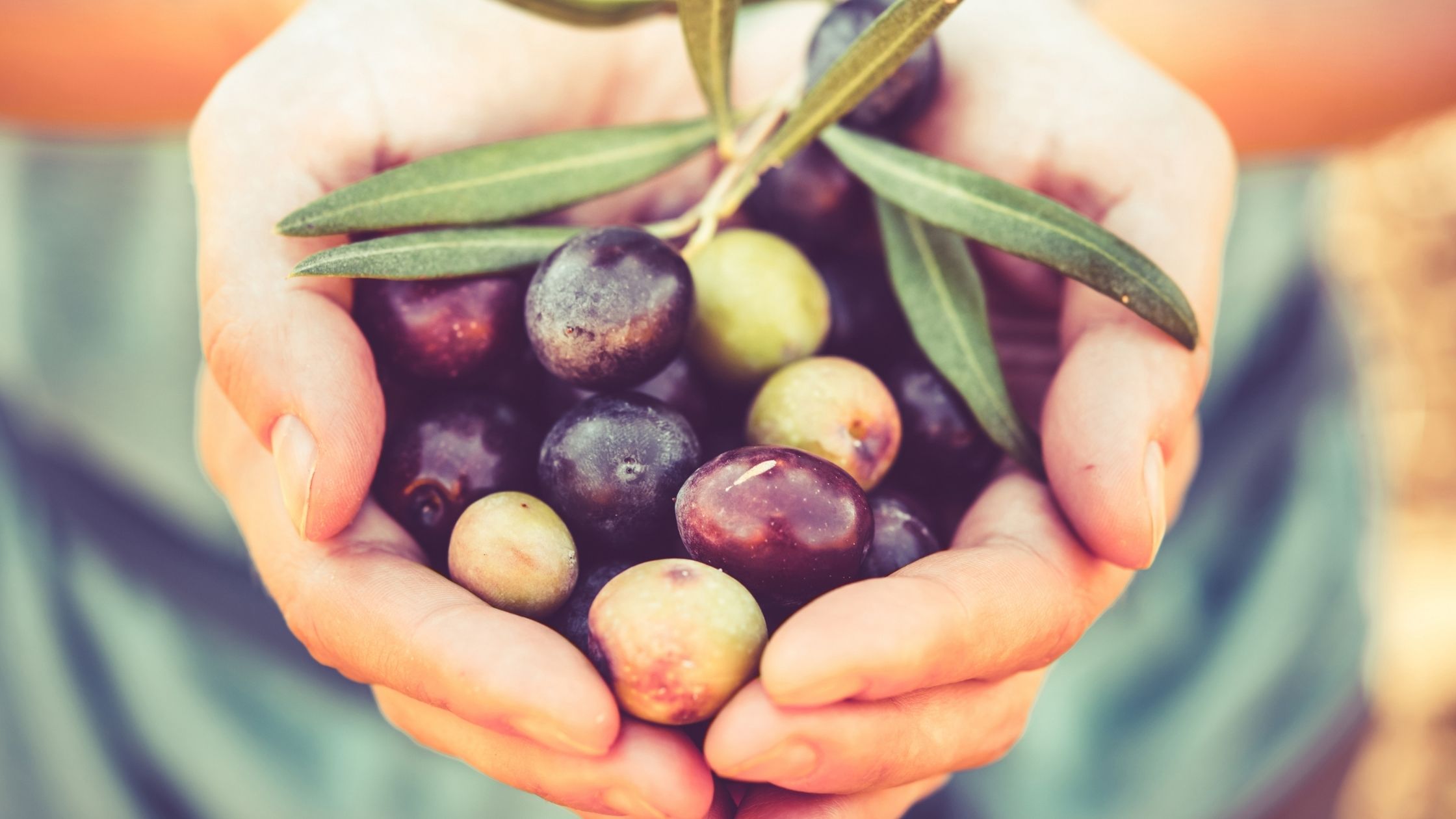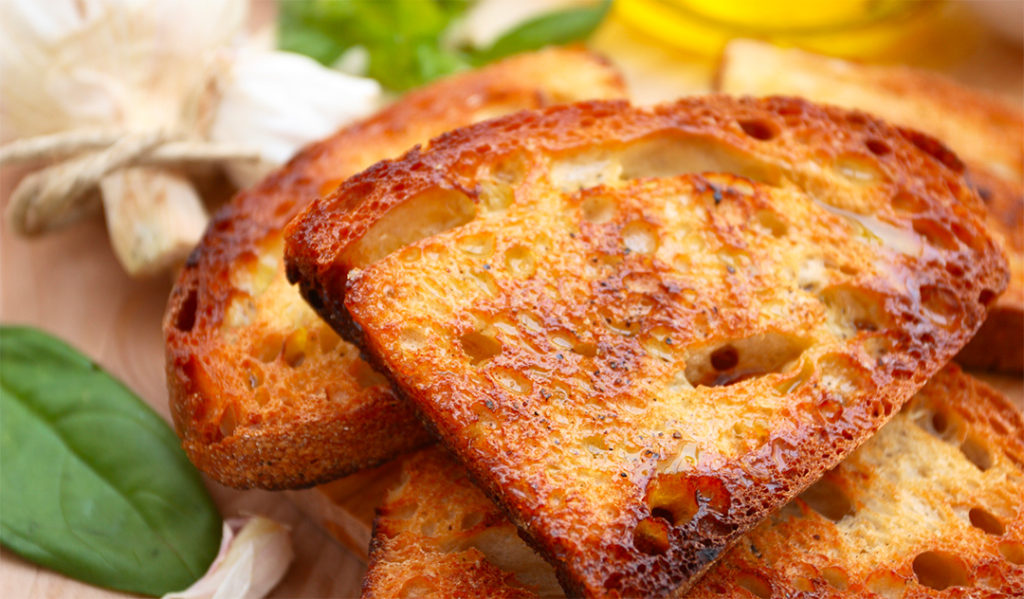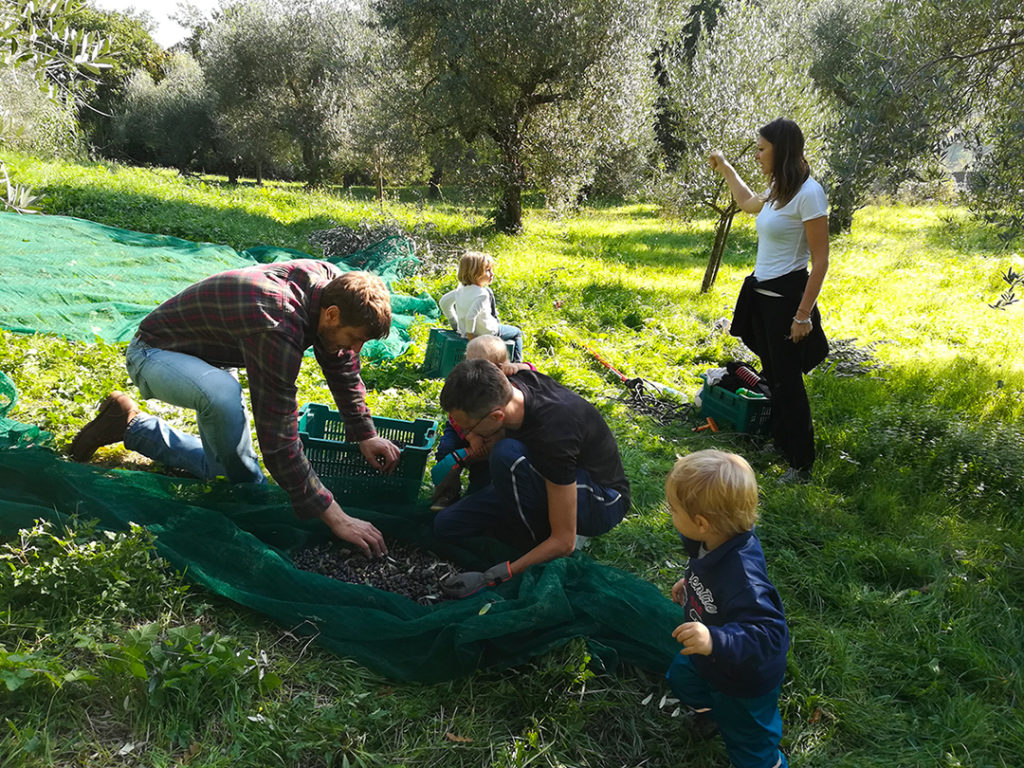
Olio nuovo e vino vecchio

(English🇬🇧🇺🇸 translation below)
Benvenuto olio nuovo, il re della tavola. Ottimo a crudo e non 🙂
“Olio nuovo e vino vecchio”.
Questo detto popolare sta a significare che se il vino, in linea generale, più invecchia e più è buono, per l’olio extravergine di oliva avviene proprio il contrario: più è nuovo e più è buono!
La raccolta delle olive avviene generalmente nel mese di novembre ed è sempre una festa: tutta la famiglia vi partecipa, coinvolgendo bambini e amici.
Tra i diversi metodi di raccolta, il più tradizionale è quello di stendere un telo ai piedi dell’olivo e ‘bacchettare’ le olive.
Per i più piccoli la scoperta di un nuovo affascinante gioco!
Al frantoio le olive vengono spremute e si ottiene così alfine l’olio nuovo che compare sulle nostre tavole tra fine novembre e inizio dicembre.
Ha un colore verde e pizzica. Col tempo diventerà più giallo e pizzicherà sempre meno.
La Toscana è una delle regioni dove si produce il migliore olio d’oliva che qui viene usato in cucina assai più del burro.
Una specialità della cucina toscana è la “fettunta”, servita generalmente come antipasto, o come merenda, accompagnata in questo caso da un buon bicchiere di vino Chianti!
È una fetta di pane toscano unta (participio passato del verbo ungere), facilissima da preparare!
La fetta di pane viene abbrustolita, quindi vi si sfrega sopra uno spicchio di aglio, la si ricopre (unge) di olio d’oliva, un po’ di sale e pepe ed è pronta.
È buonissima, specialmente se unta con l’olio nuovo: provare per credere!!!
🇬🇧🇺🇸Welcome new oil, the king of the table. Excellent raw and not 🙂
“New oil and old wine”.
This popular saying means that if the wine, in general, the older the better it is, the opposite is true for extra virgin olive oil: the newer it is, the better it is!
The olive harvest generally takes place in November and is always a party: the whole family takes part, involving children and friends.
Among the different harvesting methods, the most traditional is to spread a cloth at the foot of the olive tree and ‘stick’ the olives.
For the little ones it is the discovery of a new fascinating game!
At the mill, the olives are pressed and the new oil is finally obtained, which appears on our tables between the end of November and the beginning of December.
It has a green color and tingles the palate. Over time it will become more yellow and pinch less and less.
Tuscany is one of the regions where the best olive oil is produced, which is used here in the kitchen much more than butter.
A specialty of Tuscan cuisine is the “fettunta”, generally served as an appetizer, or as a snack, accompanied in this case by a good glass of Chianti wine!
It is a slice of greased Tuscan bread, very easy to prepare!
The slice of bread is toasted, then rub a clove of garlic over it, cover it with olive oil, a little salt and pepper and it is ready.
It is very good, especially if seasoned with new oil: try it for yourself !!!





Conversations One so far
Ciao, questo è un commento.
Per iniziare a moderare, modificare ed eliminare commenti, visita la schermata commenti nella bacheca.
Gli avatar di chi lascia un commento sono forniti da Gravatar.
No further conversations or replies allowed, at this time.